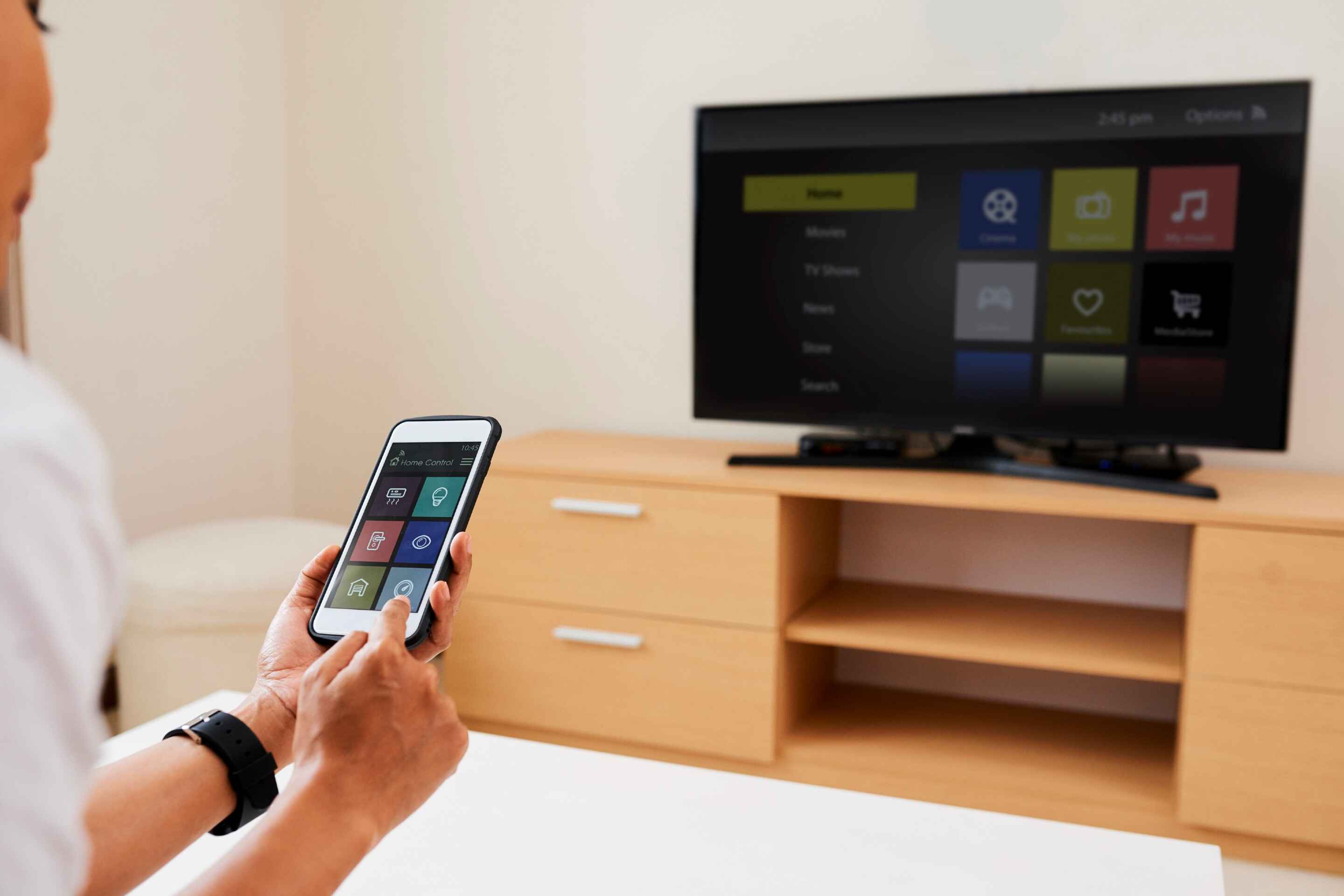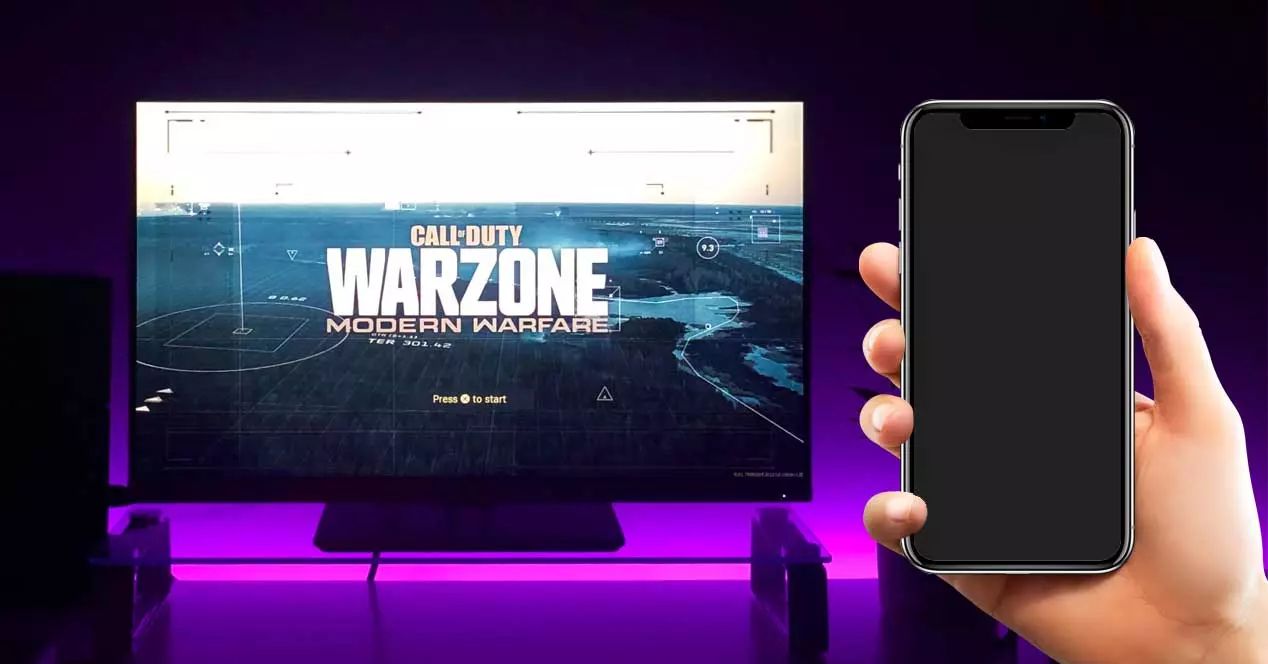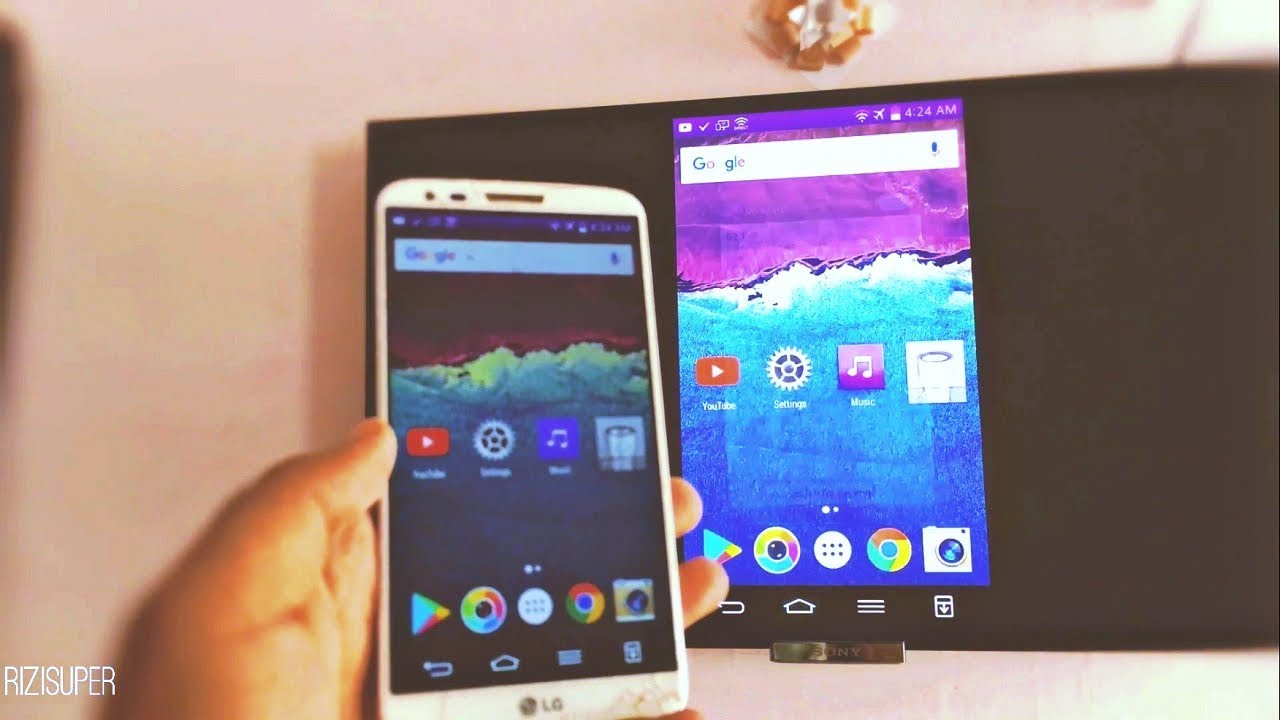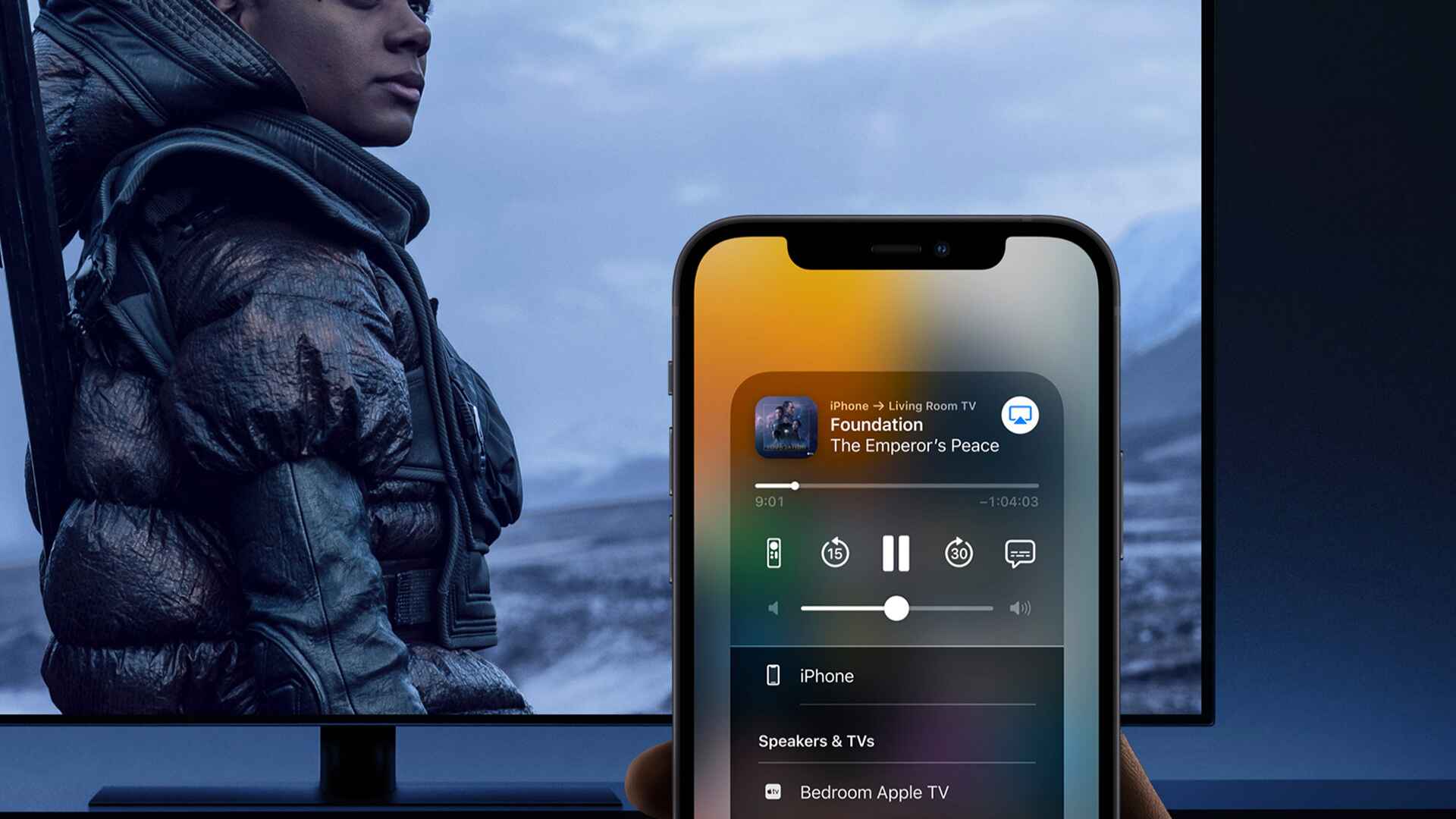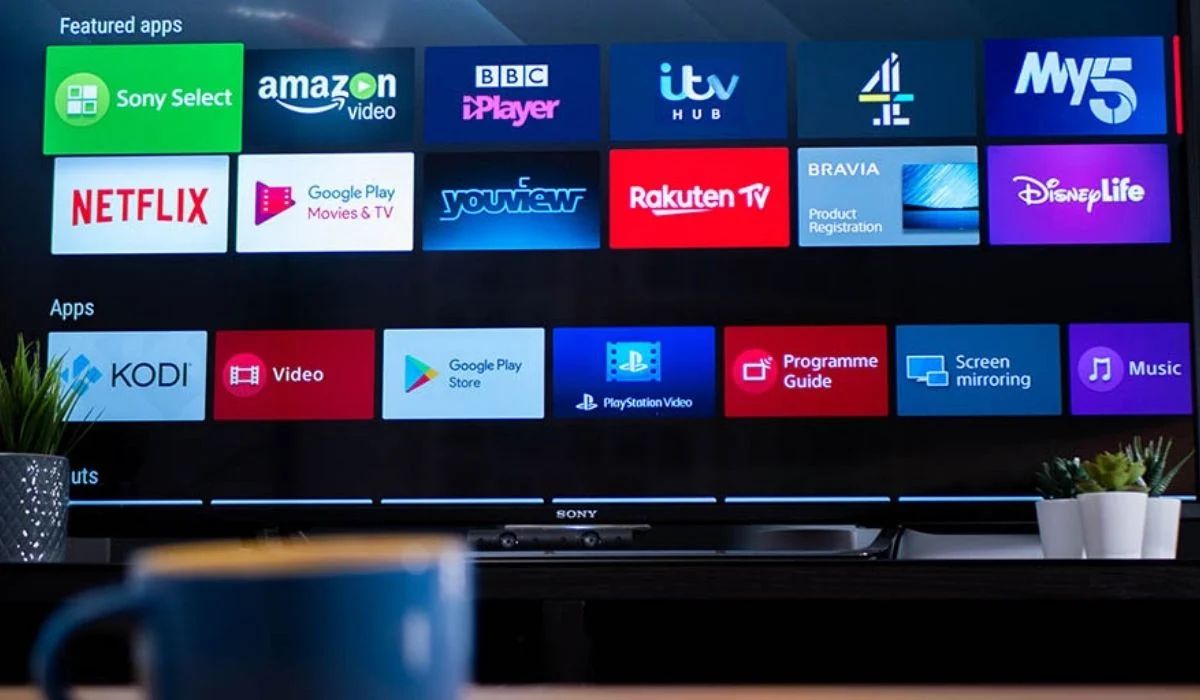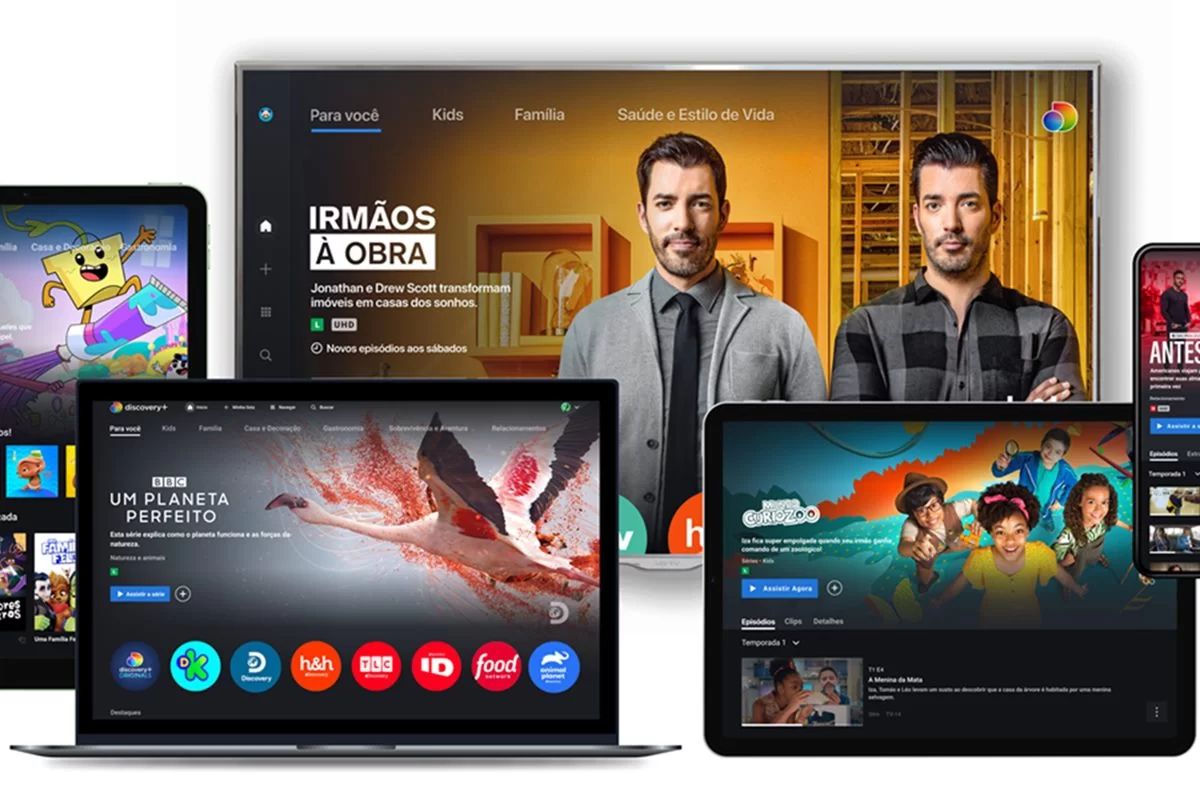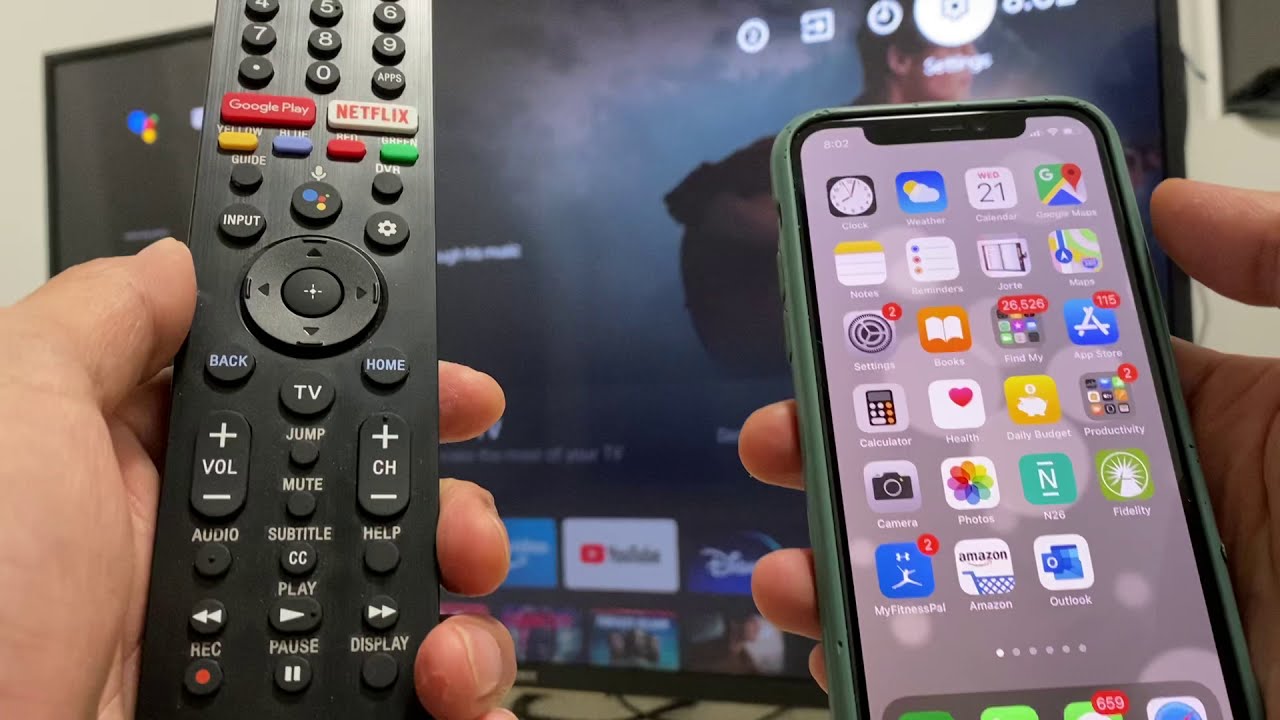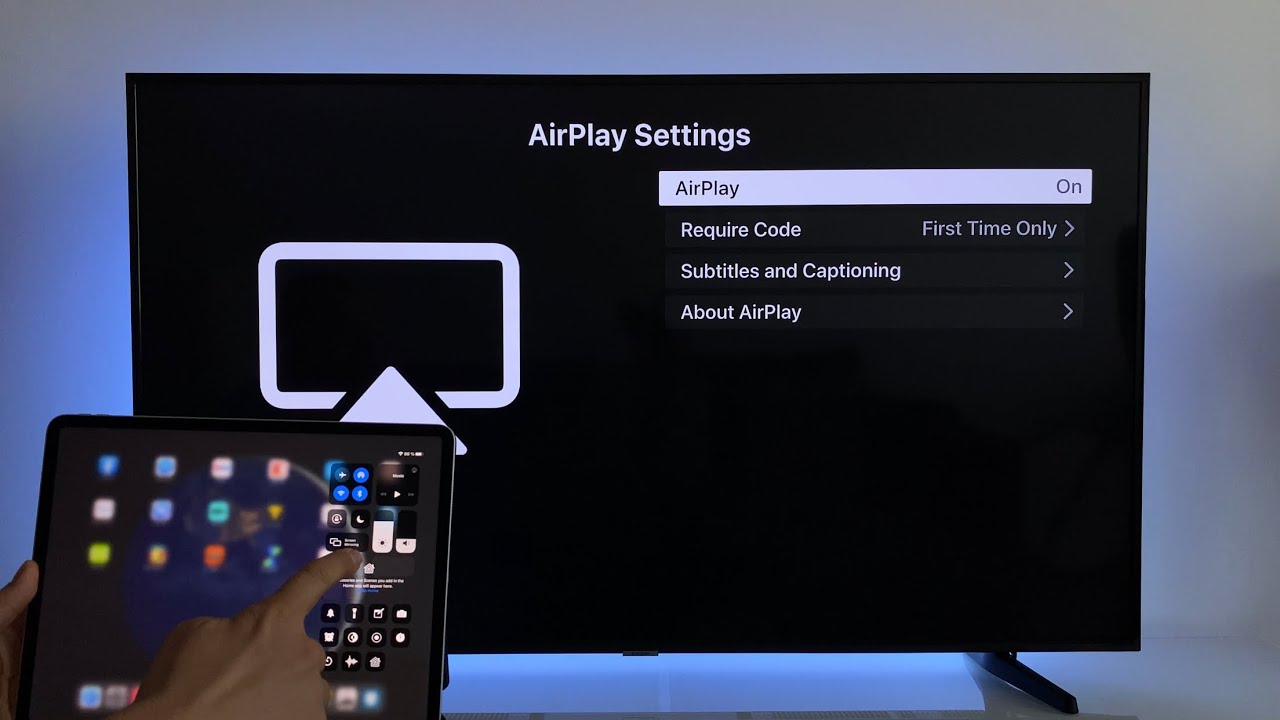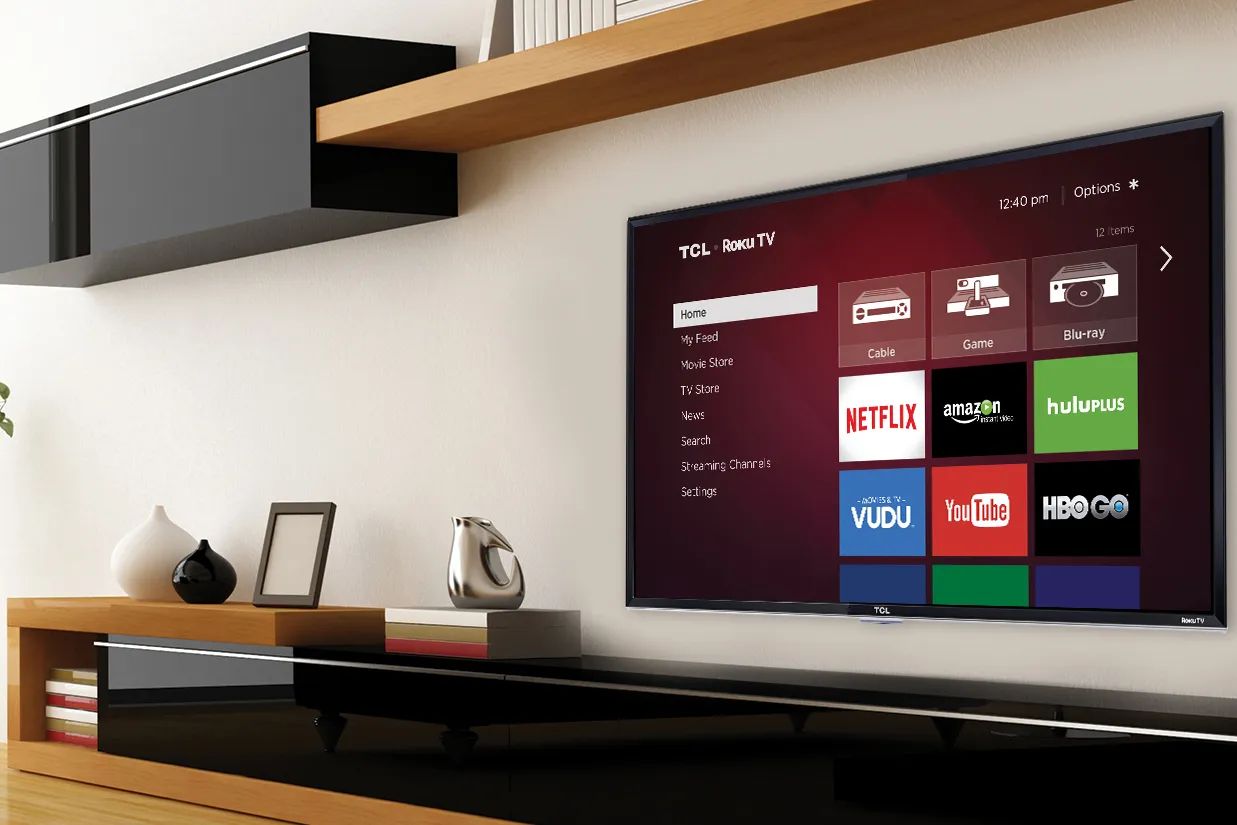Introduction
Connecting a smartphone to a non-smart TV may seem like a daunting task, but fear not! With the right cables and adapters, you can enjoy all the content from your phone on the big screen. Whether you want to watch videos, stream movies, or play games, there are several ways to connect your phone to a non-smart TV and transform your entertainment experience.
Gone are the days when a TV was just a device to watch broadcast channels. With the rise of smartphones, our devices have become powerful hubs of multimedia content. But sometimes, you want to enjoy that content on a larger screen, and that’s where connecting your phone to a non-smart TV becomes essential. Whether you have an old TV that lacks smart features or simply want a bigger display, there are various methods available to turn your non-smart TV into a smart one.
In this article, we will explore different ways to connect your phone to a non-smart TV and enjoy your favorite content in all its glory. From HDMI cables to wireless streaming devices, we’ve got you covered. So, get ready to transform your TV viewing experience and make the most of your smartphone’s capabilities.
Connecting via HDMI
One of the simplest and most common ways to connect your phone to a non-smart TV is through an HDMI cable. HDMI (High-Definition Multimedia Interface) cables are widely available and offer a convenient solution for transmitting both audio and video signals from your phone to the TV.
To connect your phone to the TV via HDMI, you’ll need an HDMI cable and an HDMI adapter compatible with your phone model. Most smartphones feature a micro or mini HDMI port, so you’ll need an adapter to convert it to a standard HDMI port.
Start by connecting one end of the HDMI cable to the HDMI port on your TV and the other end to the HDMI adapter connected to your phone. Make sure your TV is set to the correct HDMI input so that it can receive the signal from your phone. Once connected, you should see your phone’s screen mirrored on the TV display.
HDMI connections provide high-definition video and audio quality, making it perfect for streaming movies, showing photos, or playing games on a larger screen. Additionally, some smartphones support MHL (Mobile High-Definition Link), which allows you to charge your phone while it’s connected to the TV via HDMI.
It’s important to note that not all smartphones support HDMI output, so check your phone’s specifications, or consult the manufacturer’s website to confirm if your device has HDMI capabilities. Also, keep in mind that some older TVs may not have an HDMI input, in which case you’ll need to explore other connection options.
In summary, connecting your phone to a non-smart TV via HDMI is relatively straightforward. With the right cables and adapters, you can enjoy high-quality audio and video content from your phone on the big screen. Just make sure to check compatibility and set your TV to the correct HDMI input. Now, sit back, relax, and enjoy your favorite content on a larger, more immersive display.
Connecting via VGA Cable
If your non-smart TV and smartphone lack HDMI ports, another option to connect them is using a VGA (Video Graphics Array) cable. While newer smartphones may not have a VGA port, you can easily find a VGA adapter for your phone that allows you to connect it to the TV’s VGA input.
To establish the connection, start by connecting one end of the VGA cable to the VGA port on your TV and the other end to the VGA adapter connected to your phone. Next, ensure that your TV is set to the correct VGA input source. Once connected, you should see the screen of your phone mirrored on the TV display.
It is worth mentioning that VGA connections only transmit video signals, so you will need a separate audio connection to ensure sound playback on the TV. You can achieve this by using an auxiliary cable to connect the headphone jack of your phone to the audio input on your TV or using a Bluetooth speaker for wireless audio playback.
While VGA cables don’t offer the same high-definition video quality as HDMI, they can still provide a decent display resolution for everyday use. Connecting your phone to a non-smart TV via VGA is an excellent option for browsing the web, displaying presentations, or even streaming videos that don’t require ultra-high resolutions.
Before connecting your phone to the TV via VGA, make sure to check your phone’s specifications to see if it supports VGA output. Additionally, ensure that your TV has a VGA input port. If your TV doesn’t have a VGA input, you may consider using a VGA to HDMI converter to connect your phone via an HDMI port instead.
In summary, connecting your phone to a non-smart TV through a VGA cable is a reliable option when HDMI ports are unavailable. With the right adapter, you can mirror your phone’s screen on the TV and enjoy various multimedia content. Just remember to check compatibility, set the correct TV input source, and arrange an audio connection for sound playback. Now you can share your phone’s display with friends and family on a larger screen effortlessly.
Connecting via AV Cables
If your non-smart TV doesn’t have HDMI or VGA ports, another option for connecting your phone is through AV cables. AV cables, also known as RCA cables or composite cables, consist of three color-coded connectors – yellow for video and red/white for audio.
To establish the connection, start by identifying the AV input ports on your TV – usually color-coded and labeled as “Video In” and “Audio In.” Connect the yellow AV cable connector to the yellow video input port, and the red and white connectors to the corresponding audio input ports.
For your phone, you’ll need an adapter that converts your phone’s connector (typically micro USB or USB-C) to AV. Connect the adapter to your phone and then connect the AV cable to the adapter. Once everything is connected, set your TV to the AV input source to see your phone’s screen mirrored on the TV display.
It’s important to note that AV connections provide standard definition video quality, which may not be as crisp as HDMI or VGA connections. However, it’s still a viable option for basic needs like showing photos, playing music, or watching videos that don’t require high-resolution playback.
Some smartphones don’t come with built-in support for AV output, so you may need to find a compatible adapter or cable that works specifically with your phone model. Additionally, not all TVs have AV input ports, especially newer models, so make sure your TV supports this connection method before attempting to connect your phone.
If you encounter any issues with the audio, ensure that the red and white audio cables are connected to the correct audio input ports on the TV. You may also need to adjust the audio settings on your phone to ensure the sound output is correctly configured for the TV.
In summary, connecting your phone to a non-smart TV via AV cables is a viable option when HDMI or VGA ports are not available. While it may not offer the same high-definition video quality, it allows you to display content from your phone on the TV screen. Just ensure that you have the necessary adapter or cable, check compatibility, and set your TV to the correct AV input source. With this connection method, you can enjoy basic multimedia playback on a larger screen effortlessly.
Connecting via Component Cables
An alternative method to connect your phone to a non-smart TV is through component cables. Component cables are typically color-coded with red, green, and blue connectors for video, and red and white connectors for audio.
To begin, locate the component input ports on your TV, which are usually color-coded and labeled as “Y,” “Pb,” and “Pr” for video, and “L” and “R” for audio. Connect the corresponding colored component cables to their respective ports on the TV.
Next, you’ll need an adapter or cable that converts your phone’s connector (such as micro USB or USB-C) to component. Connect the adapter or cable to your phone and then connect the component cables to the adapter. Once connected, set your TV to the component input source to see your phone’s screen displayed on the TV.
Component connections can deliver high-quality video signals, including resolutions up to 1080p. This makes it a suitable choice for watching HD videos and playing games on a larger screen. However, similar to other analog connections, an additional audio connection might be required for sound playback.
Keep in mind that not all smartphones support component output, so verify your phone’s compatibility before attempting this connection method. Additionally, check whether your TV has component input ports, as newer TVs may not have this option available.
If you experience any audio issues, ensure that the red and white audio cables are connected to the correct audio input ports on the TV. You may also need to adjust the audio settings on your phone to ensure proper sound output through the TV.
In summary, connecting your phone to a non-smart TV via component cables provides an excellent option for high-definition video playback. With the right adapter or cable, you can mirror your phone’s screen on the TV and enjoy HD content on a larger display. Just remember to check compatibility, set the TV to the component input source, and arrange the audio connection if necessary. Now you can indulge in a more immersive multimedia experience from your phone on the big screen.
Connecting via RCA Adapter
If your non-smart TV lacks HDMI, VGA, or component inputs, another option to connect your phone is through an RCA adapter. RCA adapters, also known as AV to RCA converters, allow you to convert the signals from your phone to RCA format, which can then be connected to the RCA input ports on your TV.
To get started, you’ll need an RCA adapter that is compatible with your phone’s connector (such as micro USB or USB-C). Connect the adapter to your phone and then connect the RCA cables to the adapter. The RCA cables typically consist of three connectors – red for the right audio channel, white for the left audio channel, and yellow for the video signal.
Locate the RCA input ports on your TV, which are color-coded and usually labeled as “Video In” and “Audio In.” Connect the corresponding colored RCA cables to their respective ports on the TV, ensuring that the colors match correctly.
Once the connection is made, set your TV to the RCA input source to see your phone’s screen mirrored on the TV display. RCA connections provide a standard definition video quality suitable for basic multimedia playback, including watching videos and displaying photos.
It’s essential to check the compatibility of your phone and find an RCA adapter that works with your specific phone model. Additionally, ensure that your TV has RCA input ports. If your TV doesn’t have RCA inputs, you may consider using an RCA to HDMI converter to connect your phone via an HDMI port instead.
If you encounter any audio issues, ensure that the red and white audio cables are connected to the correct audio input ports on the TV. You may also need to adjust the audio settings on your phone to ensure proper sound output through the TV.
In summary, connecting your phone to a non-smart TV via an RCA adapter provides a simple and convenient solution. With the right adapter and RCA cables, you can mirror your phone’s screen on the TV and enjoy basic multimedia playback. Just ensure compatibility, set the TV to the correct RCA input source, and arrange the audio connection if necessary. Now you can share your phone’s content on a larger screen and enhance your viewing experience effortlessly.
Connecting via Chromecast
If you prefer a wireless solution for connecting your phone to a non-smart TV, Chromecast is a popular option. Chromecast is a small device that plugs into the HDMI port of your TV, allowing you to stream content wirelessly from your phone to the TV display.
To connect your phone to the TV using Chromecast, start by plugging the Chromecast device into the HDMI port on your TV. Connect the Chromecast to a power source using the provided USB cable and power adapter. Make sure your phone and Chromecast are connected to the same Wi-Fi network.
Next, download and install the Google Home app on your phone. Open the app and follow the on-screen instructions to set up your Chromecast device. Once the setup process is complete, you can use compatible apps on your phone (such as YouTube, Netflix, or Spotify) to cast content to your TV.
To cast, open the app on your phone and look for the cast icon, usually located in the top-right corner of the screen. Tap the cast icon and select your Chromecast device from the list. The content will then be streamed from your phone to the TV, allowing you to enjoy it on the larger screen.
Chromecast supports high-definition video and audio streaming, making it an excellent choice for enjoying a wide range of multimedia content. Additionally, some apps offer casting options that allow you to mirror your entire phone screen on the TV, giving you complete control over what you see on the big screen.
It’s important to note that Chromecast requires a stable Wi-Fi connection for optimal performance. Additionally, not all apps support casting, so make sure to check for the casting icon within each app before attempting to cast the content.
In summary, connecting your phone to a non-smart TV via Chromecast offers a seamless wireless streaming experience. With Chromecast, you can cast content from your phone to the TV, enjoy high-definition video and audio, and even mirror your phone screen on the TV display. Just ensure that you have a compatible TV with an HDMI port, a stable Wi-Fi connection, and the necessary apps installed on your phone. Now, sit back, relax, and enjoy your favorite content on the big screen wirelessly.
Connecting via Apple TV
If you are an Apple user, one of the best options for connecting your iPhone to a non-smart TV is through Apple TV. Apple TV is a streaming device that allows you to wirelessly stream content from your iPhone to the TV, making it an excellent solution for enjoying multimedia on a larger screen.
To connect your iPhone to the TV using Apple TV, start by connecting the Apple TV device to your TV’s HDMI port. Connect the Apple TV to a power source using the provided cable and power adapter. Make sure your iPhone and Apple TV are connected to the same Wi-Fi network.
On your iPhone, open the Control Center by swiping down from the top right corner (or bottom on older models). Tap on the AirPlay icon, which looks like a rectangle with an arrow pointing up. Select your Apple TV from the list of available devices. Your iPhone’s screen will then be mirrored on the TV.
Not only can you mirror your iPhone’s screen, but you can also use Apple TV to access various streaming apps, such as Netflix, Hulu, or Disney+. Simply navigate through the apps on the Apple TV interface using the included remote control or the Remote app on your iPhone.
Apple TV supports high-definition video and audio streaming, providing a high-quality viewing experience. You can also enjoy additional features, such as AirPlay 2 for multi-room audio and the ability to use your iPhone as a remote control for Apple TV.
It’s worth noting that Apple TV requires a stable Wi-Fi connection for optimal performance. Additionally, make sure your TV has an HDMI port and that you have the necessary apps installed on your iPhone for streaming content.
In summary, connecting your iPhone to a non-smart TV via Apple TV offers a seamless and user-friendly streaming experience. With Apple TV, you can wirelessly mirror your iPhone’s screen on the TV, stream content from various apps, and enjoy high-definition video and audio. Just ensure you have a compatible TV, a stable Wi-Fi connection, and the necessary apps installed on your iPhone. Now, sit back, relax, and enjoy your favorite multimedia content on the big screen with Apple TV.
Connecting via Miracast
If you have an Android phone or a Windows PC, one of the convenient ways to connect to a non-smart TV is through Miracast. Miracast is a wireless display technology that allows you to mirror the screen of your device onto a TV or monitor wirelessly.
To connect your device to the TV using Miracast, start by ensuring that your TV supports Miracast and has the feature enabled. On your Android phone or Windows PC, go to the settings menu and look for the “Cast” or “Wireless Display” option. Activate the feature and wait for your TV to appear in the available devices list.
Tap on your TV’s name to initiate the connection. Once connected, your device’s screen will be mirrored on the TV, allowing you to navigate and interact with your device’s content on the larger screen.
Miracast supports high-definition video and audio streaming, providing a seamless streaming experience for watching videos, playing games, or giving presentations. It is an excellent option for enjoying multimedia content without the hassle of cables or additional devices.
It is important to note that Miracast is not supported by all devices. While most modern Android phones and Windows PCs support Miracast, it may not be available on older devices or iOS devices. Additionally, some TVs may have specific requirements or limitations for Miracast compatibility.
If your device or TV does not support Miracast, you can consider using third-party apps or devices that provide similar functionality, such as Chromecast or Apple TV, which offer wireless screen mirroring options.
In summary, connecting your Android phone or Windows PC to a non-smart TV via Miracast offers a convenient wireless solution for screen mirroring. With Miracast, you can enjoy high-definition video and audio streaming on the bigger screen without the need for cables or additional devices. Just ensure that your devices support Miracast, your TV is compatible, and the feature is enabled. Now, you can effortlessly enjoy your device’s content on the larger TV display with Miracast.
Conclusion
Connecting your phone to a non-smart TV opens up a world of possibilities for enjoying multimedia content on a larger screen. Whether you choose to use HDMI, VGA, AV cables, component cables, RCA adapters, Chromecast, Apple TV, or Miracast, there are various options available to suit your needs.
HDMI cables provide high-definition video and audio quality, while VGA and AV cables offer simpler connections for basic multimedia playback. Component cables deliver high-definition video, and RCA adapters allow you to connect your phone to TVs with RCA input ports. Chromecast and Apple TV provide wireless streaming options, while Miracast enables screen mirroring for Android and Windows devices.
It’s essential to check the compatibility of your devices and ensure that your TV has the necessary input ports. Additionally, maintaining a stable Wi-Fi connection for wireless streaming options is crucial.
With the right method and cables, you can transform your non-smart TV into a smart one and enjoy your favorite content on the big screen. Whether you want to watch movies, stream videos, play games, or share presentations, these connection methods offer flexibility and convenience.
Now that you are equipped with the knowledge of how to connect your phone to a non-smart TV, you can choose the method that best suits your needs and start enjoying a more immersive viewing experience. So, grab your cables or wireless streaming devices and connect your phone to your TV to unlock a whole new world of entertainment possibilities.







